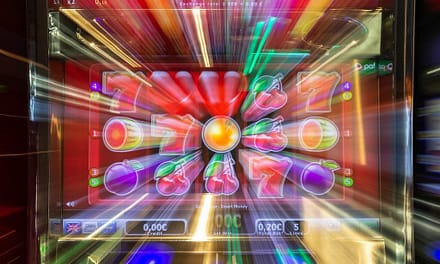Capacitors are common electronic components that have two or more parallel conductive plates where energy is stored for long intervals. Initially, a capacitor’s plates are electrically neutral. When you connect it to a battery, one plate accumulates a positive charge while the other accumulates a negative charge.
Due to the dielectric, electrons can’t pass through, causing charge accumulation. The capacitor stores energy until its voltage matches the battery. Upon disconnection, it becomes a power source, releasing stored energy through the circuit until neutral.
They have applications like filtering, smoothing power sources, controlling timing circuits, regulating voltage, and storing energy in devices. The amount of the charge stored in the capacitor is determined by its capacitance, which is measured in Farads.
Selecting the right capacitor for your application is important for better circuit performance. This article explains everything about capacitors, including their working types, and the factors to consider when selecting the right capacitor.
Types of Capacitors
There are different types of capacitors in the electronics industry. Some of the common types of capacitors used in electronics are:
- Ceramic Capacitor
- Made from ceramic materials
- Provides high capacitance in small packages
- Ideal for high-frequency circuits
- Electrolytic Capacitor
- Contains electrolyte-filled conducting plates
- Offers high capacitance
- Suitable for power supply filtering and decoupling
- Paper Capacitor
- Uses paper as the dielectric material between plates
- Commonly found in radio circuits
- Film Capacitor:
- Utilizes thin plastic or polymer films as dielectrics
- Excellent for precision timing circuits and audio applications
- Features excellent insulating resistance and low leakage currents
- Variable Capacitor:
- Has adjustable capacitance
- Useful in tuning circuits like radios and volume controls in various devices
- Supercapacitor:
- Suited for energy storage purposes
- Features high capacitance and fast charging/discharging capabilities
Factors to Consider While Selecting the Right Capacitor
Capacitors are of various types. For selecting the right capacitor types, you have to consider the following factors:
Capacitance Value
Capacitance value (Farad) is the most important factor to consider while selecting the right capacitor for your circuit. How much capacitance do you need? It depends on your application. A greater capacitance is certainly necessary if you need to filter out a rectified voltage. However, if the capacitor is simply meant to filter signal noise in a small signal circuit, a capacitance of pico to nanofarads is sufficient.
Voltage Rating
It is recommended to select the capacitors with a higher voltage rating than what the circuit needs for better performance. A general guideline is to select the capacitor with a voltage rating of 20-50% greater than the maximum voltage. However, choosing capacitors with higher voltage ratings can increase costs, depending on budget constraints. Additionally, the physical size requirements of the capacitor should also be taken into consideration when making a choice.
Tolerance
A capacitor’s tolerance rating indicates how closely its actual capacitance corresponds to the desired value. There are two common tolerances: +5% and +10%. For sensitive applications, one should choose capacitors with a low tolerance value. For coupling capacitors, capacitors with wide tolerance values are preferable. Generally, lower tolerances result in higher component costs.
Equivalent Series Resistance (ESR)
Equivalent Series Resistance (ESR) is the inherent resistance in the capacitor that contributes to energy dissipation. High ESR can lead to a variety of issues which include higher power dissipation, decreased efficiency, and reduced circuit performance. Low ESR capacitors are desirable in applications such as power supply filtering or decoupling because they reduce losses and provide stable voltage control along with reducing the output ripple voltage and handling high-frequency signals.
Dielectric Material
The dielectric material used in capacitors influences capacitance. When voltage is supplied to the capacitor plates, the dielectric material prevents current from flowing through it. There are changes in the dielectric material at the atomic level; this phenomenon is called polarization.
Aluminum electrolytic, tantalum, ceramic, and films are examples of common dielectric materials. When selecting a capacitor for your application, the dielectric constant, and dielectric losses.
Temperature Considerations
Capacitors exhibit many performance characteristics throughout different temperatures. Capacitors are often rated for specific temperature ranges. Choosing the proper type is determined by temperature extremes, stability requirements, and application criteria. Capacitors are labeled with operating temperatures indicating the minimum and maximum temperatures at which they can function consistently. Make sure that the capacitor you select is rated for the temperature range of your application and analyze the operating environment to maintain stable operation.
Size and Package
The size and package of capacitors are very important in the electronic design due to space constraints, board layout, and electrical performance. Choosing smaller capacitors allows more compact designs and efficient PCB assembly while providing faster response times.
Additionally, smaller capacitors have proper heat dissipation which also simplifies the maintenance and repairs, which enhances reliability in the system. The physical dimensions of the capacitor you choose must be compatible with the design of your circuit. Most modern electronics use surface-mount capacitors, but through-hole capacitors are still utilized in some applications.
Conclusion
Selecting the right capacitor for your circuit is important for optimal performance. It is often recommended to buy semiconductors, like capacitors, with a higher working voltage than the circuit rating.
The selection depends on the specific application of your circuit. Some of the common factors to consider when selecting the capacitor include capacitance value, temperature coefficient, voltage rating, dielectric constant, tolerance, and more.
Make sure the capacitor matches your circuit’s needs and also operates effectively within the temperature range.
FAQs
How do I determine the value of capacitance for my circuit?
To determine the capacitance value for your circuit, try to analyze the circuit’s requirements, like timing, filtration, and energy storage. Then, calculate the required capacitance based on performance goals and circuit parameters.
What happens if you put a capacitor with a greater voltage rating than required?
Using a capacitor with a higher voltage rating adds the safety margin and also improves reliability. Although it may increase the cost and size of the PCB, there is no problem in using capacitors with higher voltage ratings.
What happens if I use the capacitor with a lower voltage rating than required?
Under high voltage conditions, there is a risk of capacitor failure. Besides, it can lead to a circuit malfunction or damage to the components.
What are the factors to consider when placing a capacitor on a PCB?
You have to keep traces short and direct. It helps to minimize the parasitic inductance. Besides, you have to place the capacitor close to the components they are filtering or decoupling. Also, try to follow the manufacturer’s recommendation for placement and layout.












